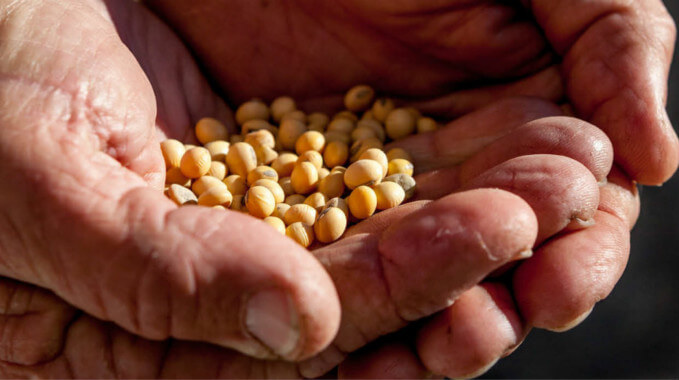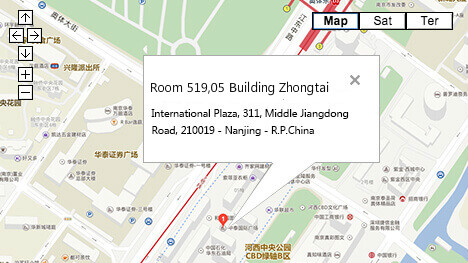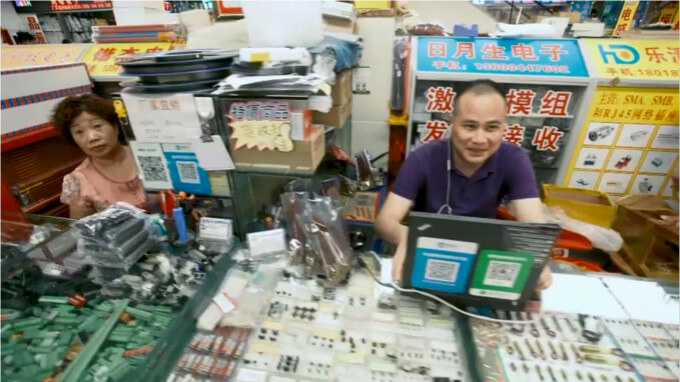Pins recall alert published by the United States Consumer Product Safety Commission ( CPSC) and…

US-China: farmers count cost of trade war
US exports of soyabeans to China, the world’s biggest market, have all but disappeared, leaving farmers dependent on a $12bn bailout
Gregory Meyer in Reserve, Louisiana 55 MINUTES AGO
The final 230 miles of the Mississippi river have long reinforced American might in global food markets. Ten grain terminals tower like fortresses along its bends, receiving crops from upstream farms, banking them in concrete silos and sending them over the levees into the holds of foreign ships. Together they can export 500,000 tonnes a day.
Yet this year the autumn high season never came. The amount of grain and oilseeds moving through Mississippi river ports has dropped by 9 per cent since the autumn of 2017, according to the Federal Grain Inspection Service. Buoys for mooring vessels bob unused.
Cargill, the world’s biggest agricultural trading house, repeatedly idled its two terminals on the river, including a five-day shutdown in November when workers stayed home unpaid.
“We’ve never done that [before],” says Jeremy Seyfert, the terminal manager. “We had the ability to take the plant down for five days because we didn’t have anything to load.”
Between September and December, soyabean volumes shipped through Cargill’s river terminals in Louisiana are down 40 per cent year on year, Mr Seyfert says.
The disruption at the mouth of the Mississippi is an acute result of the US-China trade war. After US President Donald Trump imposed new tariffs on Chinese goods, Beijing punched back with duties on US exports including most of its $20bn in agricultural commodity sales.
Soyabean exports, worth $12bn in 2017, were hit hardest. The oilseed’s conquest of farm fields in the past 20 years has largely been down to US farmers gambling on China’s demand for protein to nourish pigs and chickens. Beijing raised tariffs on soyabeans by 25 percentage points in July, pricing the US crop out of the world’s largest market and making it a symbol of deteriorating bilateral relations.
“As soyabeans have remained the most exposed commodity in the trade war, investors should monitor this market in assessing the state of Sino-US trade negotiation,” says Citigroup.
Soyabean prices depressed by the dispute remain weak, reflecting low expectations even as US and Chinese officials were this week scheduled to resume trade talks. Exporters are focusing their attention on other markets. Soyabean stockpiles are clogged up and down the Mississippi, upsetting rhythms of the crop calendar at a multibillion-dollar cost to American farmers and taxpayers.
Hopes rose in the US farm belt after Mr Trump and President Xi Jinping of China met in Buenos Aires toward the end of last year and agreed not to escalate their dispute for 90 days, a period that ends on March 2. Beijing has in recent weeks purchased a few million tonnes of soyabeans for its government reserve, in a sign of goodwill.
Yet the market is sceptical about the possibility of a permanent detente.
“The reality is that we’re in the early stages of a new cold war,” says Jan Lambregts, global head of financial markets research at Rabobank, a lender to the food and agriculture sector. “China has thrown down the gauntlet: they want to be number one. The US has responded saying that’s not going to happen . . . Within that context, there is no way I can see a lasting deal.”
Even if Beijing and Washington make peace, the effects of the 2018 soyabean showdown will endure. Market veterans recall how a 1973 US embargo on soyabean exports sparked Brazil’s ascent as a major player in the sector. “Once you are branded with the scarlet letter of being an unreliable supplier, it is hard to completely regain those lost sales,” says Scott Irwin, a University of Illinois agricultural economist.
Food security is a priority for Beijing. So uncertainty over US relations may cause it to further diversify its soyabean sources.
“No doubt in my mind, this will have some sort of long-term impact,” says Jim Sutter, chief executive of the US Soybean Export Council, a trade promotion body. “We’re going to do all we can to try and minimise the long-term damage in China, but after the 90-day period is over I don’t think we’ll wake up and go back to normal.”
The council has requested government funding to develop fast-growing alternative markets such as India and Nigeria. “We’re trying to make sure we’re going to new markets, reducing, perhaps, our dependency on a particular large market,” Mr Sutter says.
For the year up to September 30, China imported 94m tonnes of soyabeans, more than a third of it from the US. For the year that began on October 1, US government economists forecast China will import 90m tonnes, the first decline in 15 years.
The US has captured very little of that demand. From September 1 to mid-December US exports of soyabeans to China had amounted to just 341,000 tonnes, compared with 18m tonnes in the same period of 2017, US agriculture department data show. Meanwhile, US farmers have hauled in what is estimated to be a record 125m-tonne crop.
The partial government shutdown over Mr Trump’s proposed border wall has prevented the release of more recent official data on US exports.
China looks able to make do with minimal amounts of US soyabeans until new supplies begin streaming in from South America. Its own reserves were already high when the China Feed Industry Association in October lowered the protein standard for pig and poultry feed. If fully embraced, the policy will reduce the country’s annual soyabean demand by 14m tonnes, says Chenjun Pan, a Rabobank analyst in Hong Kong. Further reducing millions of tonnes of demand, an African swine fever outbreak has led China’s livestock farmers to cull pig herds.
Last summer China ended duties on soyabeans and rapeseed — another protein-rich oilseed — from five Asian countries including India. It later reopened its market to Indian-crushed rapeseed meal, dismissing earlier quibbles about its quality. Russia’s president Vladimir Putin has said he wants to sell more soyabeans to China, and in November a queue several kilometres long formed at the country’s Far East border crossings as a “massive supply of soy” made its way through, according to local reports cited by Agricensus, a price reporting agency.
The biggest winner of the trade war so far has been Brazil, as China snapped up its previous crop. Gross profit margins for farmers exceeded 50 per cent in Mato Grosso state, compared with a historical average of 30 per cent, according to Guilherme Bellotti, senior agribusiness analyst at Itaú BBA bank in São Paulo. Land planted with soyabeans this year is expected to reach a record 36m hectares, adding pressure to convert more forests into cropland.
White House officials have made confident noises that China will offer big commitments to buy more American products such as soyabeans, corn and dairy. Yet crop traders are wary of basing decisions on such pronouncements.
“People in the grain industry spend a lot of time forecasting real demand, real supply, consumption patterns, rainfall patterns. Those are what used to drive grain flows,” says Michael Ricks, the Cargill trading and merchandising manager responsible for the company’s North American soyabean portfolio. “Now you’ve added a new element, which is geopolitical policy. And that’s something that we’re not at all skilled at forecasting.”
The impact of the crop back-up is visible across the US interior. Soyabeans that cannot be exported have in most cases been stored in a bet on higher prices. White polyethylene bags stuffed with excess crops line fallow fields. They are cheaper in the short run than building metal storage silos, whose cost has soared because of new US tariffs on steel imports, silo manufacturers say.
Stocks of soyabeans available just before the 2019 harvest will more than double year on year, the US agriculture department estimates.
In the upper Midwest, soyabean trains that normally shuttle to Pacific ports have instead been redirected to head south-east towards the Mississippi river docks at St Louis, Missouri, says Kayla Burkhart, a grain manager at the CHS SunPrairie co-operative in North Dakota. There they are loaded on barges lashed together and pushed by tugboats to Louisiana terminals.
Flotillas of northern soyabeans this autumn overwhelmed the local market in Louisiana, where farmers typically grow the crop alongside rice, sugarcane, cotton and pond-raised crayfish.
Terminals, already full of supplies intended for overseas markets but which no longer had buyers, stopped purchasing Louisiana-grown varieties. More than half the crop in southern Louisiana was unmarketable or left to rot in the fields, according to the Louisiana State University AgCenter.
Damian Glaser, a farmer in New Roads, Louisiana, still had more than half of his 100,000 bushel crop — about 3,000 tonnes — unsold in December. It was the first year he chose not to sell right after harvest. “I normally don’t store anything,” he says.
Mr Glaser agrees with Mr Trump’s position on trade. “But I don’t want to go broke while he’s getting it done,” he says.
The Trump administration’s response has been to introduce a $12bn bailout scheme that includes government purchases of surplus foods, campaigns to identify new markets for crops and direct payments to farmers. Soyabeans have the biggest allocation, with $7.3bn of the total authorised for payment. Mr Glaser calls it “Trump money”.
“Even though he’s killing us right now, I think he’s going to be positive in the long run for the country,” he says of the president. “I was just hoping it wasn’t going to last this long.”
US farmers built up cash buffers during the commodities boom that ended earlier in the decade, but economic strains are building. In states of the upper Midwest — prime soyabean, corn, wheat and dairy country — banks are contending with rising levels of bad agricultural loans on their books, according to the Federal Reserve Bank of Minneapolis.
In central corn belt states, such as Iowa and Illinois, farm loan repayment rates are declining amid a “decidedly downcast outlook for agriculture”, the Federal Reserve Bank of Chicago reports.
The impact of the tariffs comes on top of a multiyear bear market in grain, with large crops forcing down prices.
“The longer this goes on, we’re going to see bankruptcies go up and then it’s going to bleed into the banking sector,” says Neel Kashkari, the Minneapolis Fed president. In his five-state region, 84 farms filed for chapter 12 bankruptcy protection in the 12 months to June 2018 — more than twice the level of four years earlier.
At Curt Engemann’s farm in Maringouin, Louisiana, the roughly $2-a-bushel fall in prices means about $260,000 in foregone revenue, he says. But he just collected a second payment under the federal aid scheme, covering most of his losses.
“I think it’s worth it,” he says of the trade war, adding: “if it continues in the next couple of years, call me back.”
Farm debt mounting on the US farm belt
US farmers were already hurting even before importers including China, Mexico and Canada imposed new tariffs on their products. Adjusted for inflation, their net cash income last year dropped to the lowest level since the global financial crisis, with the average farm business earning less than $70,000, the US agriculture department estimates. The main reasons are a plentiful supply and low commodity prices.
US farmers have hauled in huge crops in the past several years. Yields of both corn and soyabeans shattered records in autumn. Meanwhile, the Bloomberg Grains Subindex — composed of futures contracts for corn, soyabeans and wheat — has declined more than 40 per cent in the past five years.
Then came new tariffs. In addition to China’s duties on soyabeans, pork, dairy and other products, Mexico placed 20 per cent tariffs on US pork and Canada added 10 per cent in taxes on beef in response to steel and aluminium duties declared by president Donald Trump.
This all comes as farm debt is mounting, prompting warnings about risks to agricultural banks. However, it is premature to compare the situation to the farm bust of the 1980s, when a wave of bankruptcies rolled across the Midwest.
Farms today operate with less gearing: their average debt is 13.5 times the value of assets, compared to more than 20 times in the 1980s.
Farm families have also controlled costs by pausing machinery upgrades and reducing living expenses, says Chris Hurt, economist at Purdue University in Indiana. Large crops have allowed many farmers to offset low prices with bigger sales volumes. Finally, the Trump administration’s cash payments to growers hurt by trade wars has shored up their finances.
In fact, the Purdue University/CME Group Ag Economy Barometer, a gauge of producer sentiment, was higher in November than it had been a year earlier.
From: https://www.ft.com/






This Post Has 0 Comments